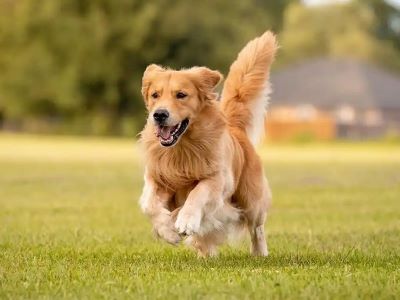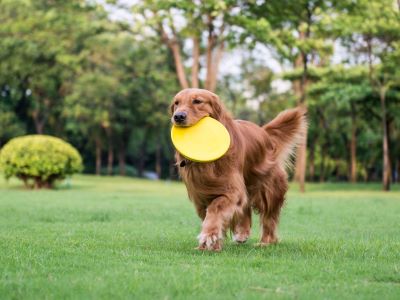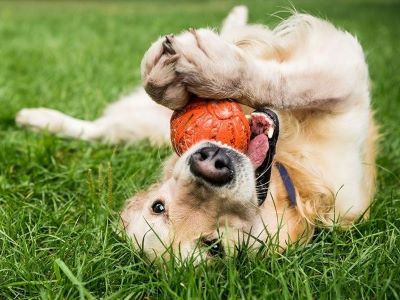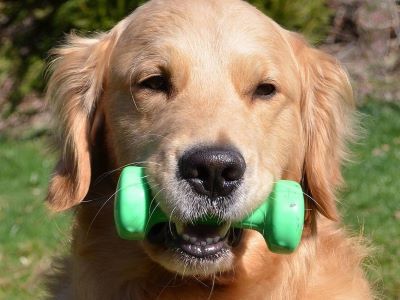Delve into the world of IVDD (Intervertebral Disc Disease) in dogs, understanding its causes, symptoms, and potential treatments. Explore the impact of this condition on your canine companion’s spinal health for informed care.

Key Takeaways
- IVDD in dogs involves spinal disc degeneration, leading to pain and neurological issues.
- Breeds with long backs are more susceptible, and symptoms vary.
- Early detection, proper management, and veterinary guidance are crucial for addressing IVDD effectively.
What Is IVDD in Dogs?
Intervertebral discs are unique structures found in the spinal column. Think of them as jelly-filled doughnuts. They consist of a tough outer layer and a gel-like inner core.
These discs sit between each pair of vertebrae, acting as both shock absorbers and connectors, allowing the spine to bend, flex, and move in different directions.↖️
Intervertebral discs play a critical role in the spine’s function. They enable your dog to run, jump, and move gracefully by absorbing shocks from movements and preventing bones from rubbing against each other.
About 65% of IVDD problems are associated with the thoracolumbar region of the spine (the back), while about 18% are in the neck alone. The rest are a combination of the two areas[1].
Essentially, these discs keep the spine stable and flexible, ensuring your dog’s mobility and comfort. Despite their essential role, intervertebral discs are vulnerable to degeneration.
Types of IVDD
Here are the types of IVDD suggested by Dr. Barri Morrison from PetMD:
Hansen Type I: Acute Disc Rupture
Hansen Type I IVDD, often referred to as “acute disc rupture,” occurs when an intervertebral disc suddenly and catastrophically ruptures or herniates.
This typically happens when the outer layer of the disc weakens and can no longer contain the inner gel-like material. As a result, the gel-like substance escapes into the spinal canal, putting pressure on the spinal cord and nerves. 🐩
Type I disc disease is most common in Dachshunds and other similar breeds with the same body structure.

Hansen Type II: Chronic Disc Degeneration
Hansen Type II IVDD, known as “chronic disc degeneration,” is a gradual deterioration of the intervertebral disc over time. Unlike Type I, there isn’t a sudden rupture; instead, the disc wears down slowly, leading to changes in its structure and function.
Type II disc disease is common in German Shepherds and other large breed dogs.🐕🦺
Causes of IVDD in Dogs
IVDD can run in families, and certain breeds have a genetic makeup that makes their intervertebral discs more prone to degeneration or herniation. This inclination may be related to the shape and size of a dog’s vertebral column, which can put more stress on the discs. Here are some of the causes:
1) Age and Breed Factors
As dogs age, their intervertebral discs naturally undergo wear and tear, making them more susceptible to degeneration. Older dogs are generally at a higher risk of developing IVDD, but it can occur in younger dogs as well.🐕
Certain breeds are more prone to IVDD due to their unique physical characteristics. For instance, Dachshunds have long bodies and short legs, which can increase pressure on their spinal discs, making them more susceptible. Breeds with long spines or dwarfism are often at an elevated risk.
2) Obesity and Lifestyle
If your furry friend is a bit on the chubbier side, they might be at risk for something called IVDD, which can make their back hurt.
Too much weight can put extra stress on their spine and the cushions between their bones🪂🦴 But don’t worry, you can help by giving them good food and exercise to keep them at a healthy weight.
Also, be careful with activities like jumping and rough play, which can be tough on their backs. 🤸♂️ So, let’s keep them fit, happy, and pain-free! 🐾
3) Traumatic Injuries
Sometimes, accidents or big falls can hurt your dog’s back and make something called IVDD more likely. Imagine it’s like a bookshelf with lots of heavy books, and a bump can make some books wobble.

Even just one accident can make the cushions between your dog’s backbones weaker, and that might lead to IVDD. These accidents can hurt the cushions directly, causing immediate pain, or make existing problems worse, giving your dog more serious troubles later.
So, let’s keep your furry buddy safe and sound to avoid these accidents and protect their back! 🛡️🐶
Symptoms and Diagnosis
Let’s understand some symptoms and different ways of diagnosis for IVDD in dogs[2]:
Common Clinical Signs
Dogs with IVDD often exhibit signs of pain, which can vary in intensity. They may vocalize, whine, or whimper due to discomfort. Behavioural changes such as increased irritability or aggression may also be observed.
Pain can be localized to the back or neck, and dogs may become sensitive to touch in these areas. Impaired mobility is a hallmark of IVDD. Dogs may have difficulty walking, staggering, or even dragging their limbs.
Some may hesitate to jump, climb stairs, or perform regular activities they once enjoyed. Weakness in the limbs is a common indicator of spinal cord compression.
Diagnostic Methods
X-rays are a valuable tool for evaluating the bones and detecting abnormalities such as fractures or bony changes associated with IVDD. While they are useful for ruling out certain conditions, X-rays alone may not provide a complete picture of the intervertebral discs themselves.
MRI(Magnetic Resonance Imaging) is highly effective in visualizing soft tissues like intervertebral discs. It provides detailed images of the spinal cord, nerves, and discs, allowing veterinarians to assess the extent of disc herniation or degeneration accurately. MRI is often considered the gold standard for diagnosing IVDD.

CT(Computed Tomography) scans can also be used to assess the spine and intervertebral discs. They provide cross-sectional images that can help in surgical planning or when MRI is unavailable. CT scans are particularly useful in emergency situations.
Importance of Early Detection
Here are some benefits of early detection of IVDD in dogs:
1) Timely Treatment: Early detection of IVDD is crucial for several reasons. Firstly, it allows for prompt treatment, which can significantly improve the chances of a positive outcome. In cases of acute disc herniation, early surgery can prevent further damage to the spinal cord and may lead to a full recovery.
2) Pain Management: Early detection enables veterinarians to manage the dog’s pain more effectively. IVDD can be incredibly painful, and addressing it promptly helps reduce suffering and discomfort for the dog.
3) Preventing Complications: IVDD can lead to complications such as muscle atrophy, loss of bladder or bowel control, and secondary infections. Early detection and intervention can help prevent or minimize these complications.
4) Improving Quality of Life: Early treatment and rehabilitation can lead to a better quality of life for dogs with IVDD. They may regain mobility and return to their normal activities more quickly, enhancing their overall well-being.
Treatment Options
Choosing the right approach for IVDD should consider factors such as the severity of the condition, the dog’s age, overall health, and owner preferences. Here are the pros and cons of these approaches for you to make the right decision:

| Approach | Pros | Cons |
|---|---|---|
| Conservative Management | – Non-Invasive: Non-surgical and less invasive. – Suitable for Mild Cases: Effective for mild IVDD or when surgery isn’t viable. – Cost-Effective: Generally more affordable. | – Limited Efficacy: Less effective for severe cases. – Longer Recovery: Recovery may take longer with a risk of recurrence. – Pain Management: May require ongoing medication. |
| Surgery (Discectomy, Laminectomy) | – Enhanced Recovery: Aids in recovery, and promotes strength and mobility. – Pain Management: Helps manage pain during healing. – Prevention: May reduce the risk of future IVDD episodes. | – Invasive: Surgery carries risks, including infection. – Costly: Typically more expensive than conservative management. – Recovery Period: Requires post-operative recovery with restricted activity. |
| Rehabilitation and Physical Therapy | – Enhanced Recovery: Aids in recovery, and promotes strength and mobility. – Pain Management: Helps manage pain during healing. – Prevention: May reduce the risk of future IVDD episodes. | – Requires Commitment: Ongoing effort from both owner and dog. – Not Always Available: Access to specialized services may be limited. – Varied Outcomes: Effectiveness can vary based on the dog’s condition and owner’s compliance. |
Recovery
Understanding these factors and potential complications is essential for dog owners dealing with IVDD.

Factors Influencing Recovery
Here is the information influencing factors:
- Severity of IVDD: The extent of disc damage and spinal cord compression significantly affects recovery. Mild cases may recover more quickly and completely, while severe cases may have a more challenging and prolonged recovery process.🐕🦺
- Early Intervention: Prompt diagnosis and treatment, whether conservative or surgical, increase the likelihood of a successful recovery. Early intervention can prevent further damage to the spinal cord and improve outcomes.
- Age and Overall Health: Younger, healthier dogs tend to have better recovery prospects. Older dogs or those with preexisting health conditions may face additional challenges in rehabilitation.
- Type of Treatment: The chosen treatment method plays a significant role. Surgical interventions, such as discectomy or laminectomy, can offer faster relief but require post-operative care. Conservative management may have slower results but is less invasive.🤕💉
- Owner Compliance: Owners who closely follow the veterinarian’s recommendations regarding medication, physical therapy, and activity restrictions contribute to their dog’s successful recovery.
Long-Term Management and Care
Dogs with a history of IVDD may require ongoing pain management, especially as they age. This may include non-steroidal anti-inflammatory drugs (NSAIDs) or other pain-relief medications. 💉💊
Maintaining a healthy weight is crucial to prevent additional stress on the spine. Dogs prone to IVDD should be fed a balanced diet and receive regular exercise tailored to their condition.
Continuing physical therapy exercises can help maintain muscle strength and flexibility, reducing the risk of future IVDD episodes. Routine veterinary visits allow for early detection of any recurrence or related issues, enabling timely intervention.

Potential Complications
Here are some issues that may surface due to potential complications:
- Recurrent IVDD: Dogs with a history of IVDD are at a higher risk of experiencing it again, either at the same site or elsewhere along the spine.
- Muscle Atrophy: When a dog can’t move much for a long time or their nerves are hurt, their muscles can become weak and small, and they might need help with exercises to get better.
- Loss of Bowel Control: Severe cases of IVDD can result in loss of bladder or bowel control, which may require special care and accommodations.🏡
- Infection: Surgical procedures carry the risk of infection, which, if not promptly treated, can complicate recovery.
- Secondary Health Issues: IVDD can lead to other health concerns, such as urinary tract infections or bedsores, which require additional medical attention.
- Chronic Pain: Some dogs may experience chronic pain even after treatment. Pain management may be necessary for their long-term comfort.
Prevention of IVDD in Dogs
Lifestyle modifications play a pivotal role in preventing IVDD in dogs. Maintaining a healthy weight through proper diet and regular exercise can reduce strain on the spine. Preventing excessive jumping and rough play, especially in breeds prone to IVDD, can minimize the risk of injury.🤕
Breeding practices are essential in reducing the genetic predisposition to IVDD. Responsible breeders should avoid mating dogs with a family history of IVDD and prioritize selecting breeding pairs with sound spinal health.

Routine veterinary check-ups are crucial for early detection. Veterinarians can identify early signs of IVDD and recommend preventive measures, such as weight management or exercise adjustments, tailored to the dog’s needs.🐾
Raising awareness among pet owners about IVDD and its risk factors is vital. Educated owners are more likely to make informed choices about their dog’s lifestyle, monitor for early signs of the condition, and seek prompt veterinary care when necessary, ultimately improving the chances of early intervention and successful management
FAQs
Early Signs of IVDD in Dogs?
Common symptoms of IVDD include but are not limited to Pain in the neck or back region, Unwillingness or inability to walk, Difficulty urinating and/or defecating, Shaking or trembling (usually in response to pain), and Knuckling on paws.
What is IVDD in dogs’ life expectancy?
Dogs making a full recovery will have a normal life expectancy. If a dog makes a full recovery, they will have a normal life expectancy for their breed. However, once a pup has IVDD, they are more likely to have a repeat occurrence.
What is IVDD in dogs?
Intervertebral disc disease (IVDD) is a common source of back pain in dogs, especially in older dogs but also in younger dogs of predisposed breeds. The severity and type of disc injury can vary widely, ranging from mild discomfort to paralysis.
Conclusion
In the world of caring for our dogs, it’s important to remember that Intervertebral Disc Disease (IVDD) can be a concern, but there’s good news! When we learn about what causes it, how to spot it, and what to do, we can be the best pet parents ever. 🐾
Simple things like keeping our pups at a healthy weight, making sure they don’t jump too much, visiting the vet regularly, and learning about IVDD can make a big difference.
With love and knowledge, we can help our furry friends live happy, active lives without worrying about IVDD. So, let’s keep those tails wagging! 🐶
Reference:
- Intervertebral disc disease. (2023, July 26)– Cornell University College of Veterinary Medicine.
- Weishaupt, J. (2021, December 23). What is intervertebral disc disease (IVDD) in dogs?– WebMD.



